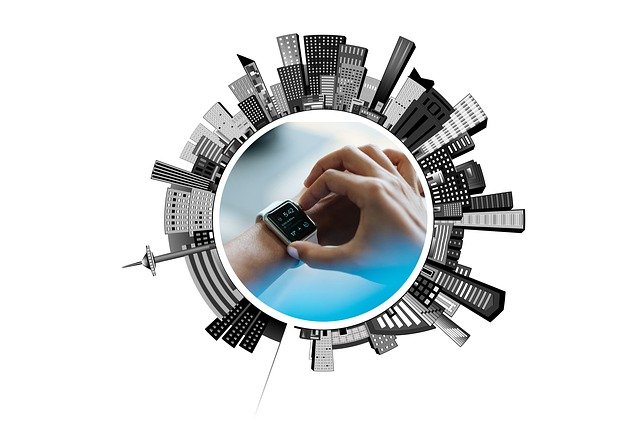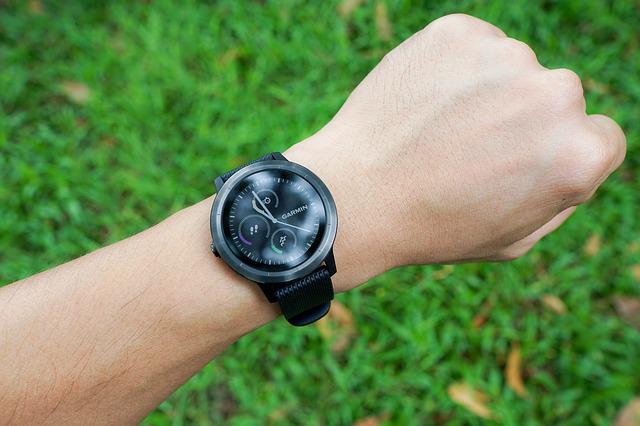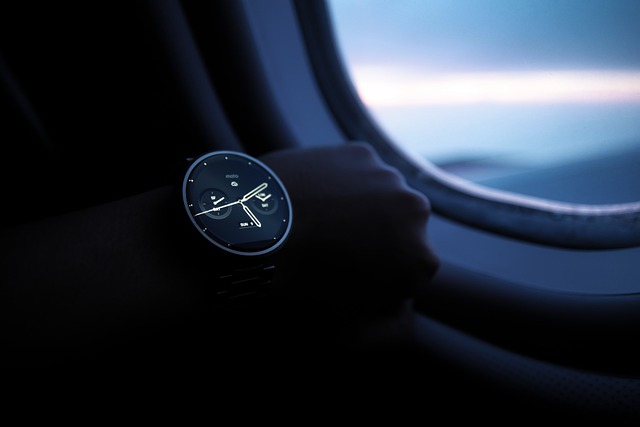Garmin’s latest top-of-the-line Fenix 7 track-it-all adventure smartwatch introduces a number of new features, better GPS, longer battery life and improved tech – as well as a touchscreen to go with its buttons.
Starting at £599 ($699.99/A$1,049), it can hit £1,000 or more if you pick the largest, most fancy version. But the new luxury device does give us a preview on what the firm’s cheaper sports watches may feature later in the year.
The Fenix 7 comes in a range of sizes, weights, materials and with an optional solar-charging system, all of which have full mapping.
The new model looks like a refinement rather than a revolution away from previous Fenix designs. The 7S is the smallest, sleekest version with a 42mm case and 1.2in screen, although it is still obviously a sports watch. The standard 7 and supersized 7X are larger, chunkier beasts but are still light and comfortable to wear.
The watch has a charging port on the back and special quick-release straps but is compatible with standard third-party bands, too. Photograph: Samuel Gibbs/The Guardian
The new touchscreen makes the Fenix feel slicker and more modern. You can tap and hold on widgets on the watch face to jump straight to things such as a graph of your heart rate, battery power settings or notifications, or swipe through menus, screens and maps. For daily smartwatch functions it works very well.
But touchscreens are unreliable during activities, don’t work well in the wet nor with gloves. Garmin has kept its excellent five-button control system and disables touch when you start most activities, to prevent accidental pauses of runs or similar.
Because of the smart way Garmin has integrated the touch system with buttons, everything can be controlled via either method or both at the same time. It is genuinely great
The transflective colour LCD screen looks the same as its predecessor – clear and easy to read in direct sunlight, with a backlight for the night. But the power-efficient technology doesn’t look as slick as OLED screens.
The Fenix 7 sapphire solar, as pictured, has a 47mm-wide case with 22mm straps and stands 14.5mm tall – just fitting on my 50mm-wide wrist. Photograph: Samuel Gibbs/The Guardian
Specifications
-
Screen: 1.2, 1.3 or 1.4in transflective MIP LCD
-
Case size: 42, 47 or 51mm
-
Case thickness: 14.1 to 14.9mm
-
Band size: standard 20, 22 or 26mm quick release
-
Weight: 42 to 68g body only
-
Storage: 16 or 32GB
-
Water resistance: 100 metres (10ATM)
-
Sensors: GNSS (GPS, Glonass, Galileo, BeiDuo, QZSS), compass, thermometer, heart rate, pulse Ox
-
Connectivity: Bluetooth, ANT+, wifi
Long battery life
The Garmin Connect app controls settings, syncs and displays the mountains of data and insights the watch collects, and enables ‘smart’ features such as message notifications and music control on your phone. Photograph: Samuel Gibbs/The Guardian
The watch can be used independently of a smartphone, unlike rivals, paired via Bluetooth to an Android or iPhone, or synced with a Mac or Windows PC using the Garmin Express app and included USB cable. But the watch has wifi to sync data straight to your Garmin account, download new apps, system and map updates, too.
The Fenix 7 lasts for a very long time between charges. Connected to my phone for smart notifications, with full activity and health-tracking features active, including blood oxygen monitoring during sleep and three hours of running, the watch lasted over 15 days and nights. It should last up to 40 hours of running with GNSS or longer with some power-saving features turned on – long enough for practically any activity.
Note the smaller 7S has shorter battery life or the larger 7X lasts longer, while solar models can add up to four days extra smartwatch use or eight hours of running, too, roughly double the Fenix 6 Pro solar. It takes more than 2.5 hours to fully charge the Fenix 7 via USB, hitting 50% in an hour.
Health, fitness and tracking
Each activity tracks more data than most need and can be customised, including changing the information that is displayed on screen during the activity and what is recorded. Pictured are the main post-run statistics. Photograph: Samuel Gibbs/The Guardian
The Fenix 7 can track practically every activity under the sun, with well over 60 activities preloaded and more available from the Connect IQ store. They cover all the sport and adventure bases, including walking, hiking and running in its various forms, most things concerning a bike, swimming and various water sports, triathlons and other multisport events, skiing, climbing, strength and gym work. And even some ball sports.
It has two meaningful improvements to Garmin’s best-in-class running tracking. The improved GNSS consistently gets a satellite lock faster outdoors and indoors, and produces much more accurate live pace estimations compared with its predecessor.
The new real-time “stamina” measurement for running and bike-based activities is a live estimate of how much energy your body has left as a percentage, based on your fitness, sleep, activity, recovery and other factors the watch tracks during your day.
The watch shows two metrics as overlapping bars: your total ‘potential’ energy at your usual pace (black) and your ‘current’ stamina (orange), which is how much energy you have left for harder than usual work, such as a burst of speed or a steep hill. Photograph: Garmin
Your potential energy goes down steadily as you run, while your current stamina shrinks faster when putting in more effort and recovers when taking it easier. If the bar hits zero it doesn’t mean you’re immediately going to shut down but it is likely you won’t have the energy for top performance.
Combined, they allow you to better pace yourself, such as if you’ve started off too fast in a race or haven’t pushed it hard enough in training. It gives you instant information of how much you have left after each interval or whether you’ve got the energy for a proper sprint finish. Afterwards, you can see a chart of your stamina against distance, pace or the other metrics the watch records.
The comprehensive health tracking mirrors the watch’s predecessor, the Fenix 6, including ‘heath snapshots’, all-day heart rate, stress, steps, calories, sleep and Garmin’s excellent ‘body battery’ system for interpreting it all but lacks ECG. Photograph: Samuel Gibbs/The Guardian
Observations
-
The Fenix 7X has a light that acts as a torch or as a running light at night, flashing red as your arm swings back and white as it goes forward, making you more visible to cars.
-
The sapphire solar models have an additional “multiband GPS” feature, which increases tracking accuracy around tall buildings or vegetation by locking on to the newer “L5” frequency band of GPS as well as the usual “L1” band.
-
The watch has Garmin Pay for contactless payments but few banks are supported in the UK.
The touchscreen makes navigating the highly detailed worldwide maps a lot easier and faster than previous button-only systems, which could be very tedious. A new and useful ‘up ahead’ feature shows how far and the direction to the next self-prescribed waypoint on walks or hikes. Photograph: Samuel Gibbs/The Guardian
Sustainability
The Fenix 7 is generally repairable. The battery is rated to last at least a few years of frequent charge cycles while maintaining at least 80% capacity. In lasting more than 15 days between charges, in theory, the battery would not need to be replaced for as long as 20 years. The watch does not contain any recycled materials. Garmin guarantees at least two years of security updates from release, but typically supports its devices far longer.
Garmin offers trade-in schemes for some lines and complies with WEEE and other local electronics recycling laws.
Price
The Garmin Fenix 7 comes in a variety of sizes and models, starting at £599.99 ($699.99/A$1,049) for the standard 42 or 47mm models.
Solar models cost from £689 ($799.99/A$1,199) and the top sapphire solar models cost from £779.99 ($899.99/A$1,499).
Verdict
The Fenix 7 is a powerhouse of a do-it-all, go-anywhere, track-anything adventure watch, that is very much the best in the market.
It is an excellent follow-up to the Fenix 6 line that introduces meaningful upgrades, many of which are expected to flow down into Garmin’s numerous lines of less expensive, more focused products over the next year.
The longer 15-day-plus battery life, faster performance, better GPS, a touchscreen and stamina metrics are great additions to the comprehensive tracking Garmin is known for. Most people will only use about 5% of what the watch is capable of but that 5% will be different for each person and each occasion.
The Fenix 7 is an expensive, statement purchase. If you just run or cycle it will be overkill but if you have the cash, do lots of activities or just like the idea of being able to parachute into the middle of nowhere and still find your way home, this is the watch for you.
Pros: tracks everything under the sun, very long battery life, optional solar charging, cross-platform phone notifications, Garmin Pay, full offline mapping, offline Spotify, Bluetooth, wifi, 100m water resistance, real buttons, accurate GPS/GNSS, choice of materials.
Cons: expensive, big, limited Garmin Pay bank support, limited smartwatch features compared with Apple Watch/Galaxy Watch, no voice control, screen basic compared to OLED.



